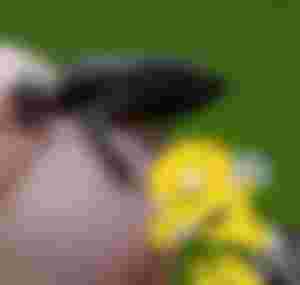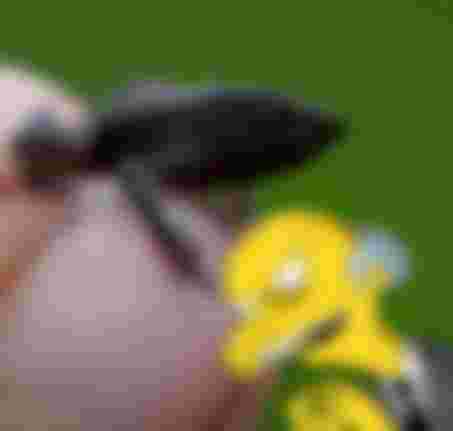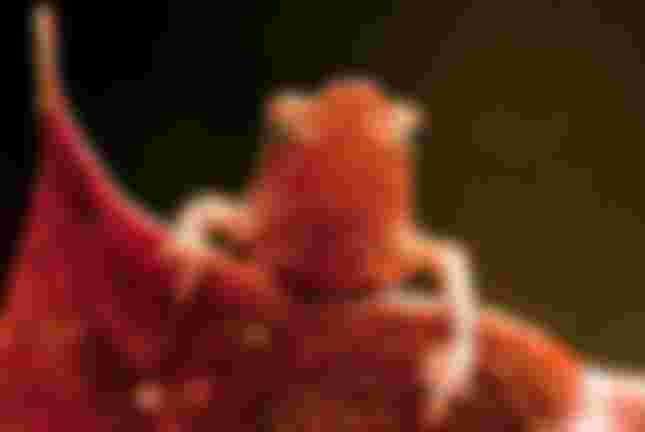Simpson toad
0
20
Some time ago, an expedition was formed by Conservation International with the support of a group of amphibian experts and the Proaves Foundation. Based on his work, 3 new species of frogs were discovered that, due to their characteristics, have been classified as completely new to scientists.
Among the results of his work were an amphibian , a rare toad with ruby-colored eyes, the rocket frog and the Simpson toad that hid in the leaves that fell to the ground. Each of the above species was found during the day, that is, at an infrequent time for amphibian activity.
What is the Simpson Toad?
It is a strange amphibian because it has a thin and very long nose that is quite similar to a snout that, due to its characteristics, makes us think of Mr. Burns from the animated series The Simpsons. In addition, in this regard, it is necessary to note the comment of George Meyers as producer and writer of the series who actively participates in the Council of Conservation International and is a lover of amphibians when noting that his resemblance to Burns is undeniable,
Another reason why the Simpson toad is an unusual amphibian is that it is a specimen that does not go through the tadpole phase, therefore its eggs are deposited in the jungle and the young toads hatch directly.
As for their body, it has a very colorful hue that resembles that of the leaves in the area they inhabit, allowing them to camouflage themselves. As for its size, it is 2 centimeters long, although it is not known if these measurements apply to all specimens, since to date only two of them have been seen.
The Simpsons toad is a strange amphibian that has a very long and thin nose, which resembles a snout, but with similar characteristics reminiscent of Mr. Burns from the Simpsons animated series.
George Meyers (writer and producer of the series) is an active member of the Council of Conservation International, in addition to being an amphibian lover, so his resemblance to Burns is undeniable.
However, this amphibian is unusual, since it does not go through the tadpole phase. The eggs are deposited in the jungle and the young toads come out directly from there.
The body of the Simpsons toad has a very colorful hue, similar to the color of the leaves found in the area it inhabits, allowing it to camouflage itself.
home
animal notes
Information about the Simpsons toad
Information about the Simpsons toad
animal notes amphibian , toad
Zero width embed
The Simpsons toad is a strange amphibian that has a very long and thin nose, which resembles a snout, but with similar characteristics reminiscent of Mr. Burns from the Simpsons animated series.
George Meyers (writer and producer of the series) is an active member of the Council of Conservation International, in addition to being an amphibian lover, so his resemblance to Burns is undeniable.

Zero width embed
However, this amphibian is unusual, since it does not go through the tadpole phase. The eggs are deposited in the jungle and the young toads come out directly from there.
The body of the Simpsons toad has a very colorful hue, similar to the color of the leaves found in the area it inhabits, allowing it to camouflage itself.
Its length size is approximately 2 centimeters, although it is not possible to know if these measurements are the same in all specimens, since only two specimens have been observed to date.
Toad Simpsons is a strange amphibian that has a long and thin nose, which resembles a snout, it has similar characteristics reminiscent of Mr. Burns from the animated series The Simpsons, hence its name.
Habitat
This rare species lives in the mountainous area of northwestern Colombia.
Behavior
The Simpson toad roams by day on the forest floor some 2,000 meters above sea level and hides under dead leaves that fall from trees.
Characteristics
It is a tiny toad that measures 3 to 4 centimeters. He has an aquiline nose and bright ruby-colored eyes. Its coloration and the shape of its head resemble the withered leaves on which it lives, allowing them to camouflage.
Reproduction
This specimen is unusual because it does not go through the tadpole phase. The females lay their eggs in rainforests and hatch into fully formed toadlets.


